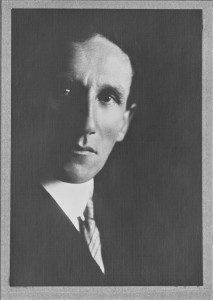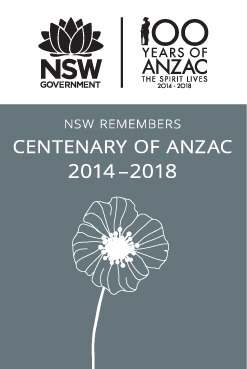Conscription
Conflict on the Home FrontThis webpage was developed as part of State Archives’ contribution to History Week 2015.
While World War I pitted the Allies against the Germans on the battlefields of Europe, another conflict was taking place on the New South Wales’ home front – the battle over conscription. Compulsory military service was not a new concept to the Australian people. Since 1903, all Australian males between the ages of 18 and 60 who had lived in Australia for more than six months could be compelled to serve in the Defence Forces in order to protect Australia and its territories from ‘domestic violence’. ‘Domestic violence’ included invasion or violence on home soil. It did not include conflict overseas. (1)
The push for conscription
On 26 November 1915, the Australian Prime Minister W M Hughes promised the British Government another 50 000 recruits in addition to the 9500 being sent per month as reinforcements. (2) Pressure was then placed on each Australian state and territory to accelerate recruitment drives in order to meet the targets. With over 38% of Australia’s male population residing in New South Wales at the time, it was logical to expect that the greater proportion of recruits would come from New South Wales. (3)
The need for conscription had already been raised in certain quarters during the war, particularly after the losses sustained at Gallipoli, Fromelles and Pozieres, but initially both the State and Federal Governments were hesitant to commit themselves publically to its necessity. (4) However, as 1916 progressed, the New South Wales Premier W A Holman [Fig. 1] expressed concerns that New South Wales wouldn’t be able to fulfill the promise. (5)
It was a concern shared by the Prime Minister, and as Britain had already introduced conscription in March 1916, the momentum for conscription to be introduced in Australia began to build. The debate that followed divided the country on many levels. It culminated in the Commonwealth Government’s announcement on 30 August 1916 that a plebiscite would be held to decide the issue. The date was set for 28 October 1916. (6)
Support for conscription
Those who supported conscription used several different arguments, however there was a common rhetoric that was used to play on the heart strings, egos and consciences of eligible men:
- After everything that British Empire had done for Australia, Australia owed it to Britain to go and fight;
- Australia hadn’t done its fair share;
- Australia could be invaded and lose its freedom and liberty;
- Australians were letting their mates down by not joining them at the front. (7)
An example of these arguments can be found in the Manifesto of the Universal Service League. [Fig. 2]
At a more basic level, families who had sons and husbands at the front often felt resentment and a sense of injustice towards those who stayed at home. (8)Opposition to conscription
Opposition to conscription came from various sectors of society, and not everyone who opposed conscription necessarily opposed the war. There were those who feared that they would lose their livelihoods if the last of their sons went to war. In many families, keeping one son at home was a calculated strategy to keep the family farm or business
running. (9)
Others believed that it was a question of liberty, of every man’s right to his bodily freedom. (10) Many of the labor organisations saw it as a war between the capitalists and the workers, where the capitalists profited while the working man was sacrificed. There was also a fear of increased militarism at home that would result in workers losing their rights. (11)
Related
References
(1) Defence Act 1903-1909 (Cth); Commonwealth of Australia Constitution Act (Cth), s. 119.
(2) Australian War Memorial. Timeline: Australia in the First World War, 1914-1918, https://www.awm.gov.au/1914-1918/timeline/#2 (accessed 11 August 2015); State Archives New South Wales: Premier’s Department; NRS 12060, Letters received [9/4785] B18/1327, Directions Issued by Hon. W. M. Hughes, Prime Minister, p. 3.
(3) Australian Bureau of Statistics. 3141.0 – Population and Vital Statistics Bulletin, 1916, http://www.abs.gov.au/AUSSTATS/abs@.nsf/DetailsPage/3141.01916?OpenDocument, (accessed online 11 August 2015).
(4) Burness, Peter. (n.d.). 1916: Australians in France, https://www.awm.gov.au/ww1/1916/essay/, (accessed 20 August 2015); Hogan, M, Labor Pains: Early conference and executive reports of the Labor Party in New South Wales 1912-1917, Volume III, Federation Press, 2008, pp. 368 & 370; NRS 12060 [9/4736] B16/4153.
(5) ‘Against Conscription’, 11 May 1916, The Australian Worker, p. 21, http://nla.gov.au/nla.news-page16651043.
(6) Hogan, p. 5; ‘A Referendum’, 30 August 1916, Evening News, p.1, http://nla.gov.au/nla.news-article120367014.
(7) Hogan, p. 455; NRS 12060 [9/4705] 15/7337.
(8) Hogan, pp. 452 & 458; SANSW: Eugowra Court of Petty Sessions; NRS 2981, Depositions [38/31 Case 51/1916].
(9) McQuilton, John. ‘Enlistment for the First World War in rural Australia: the case of north-eastern Victoria, 1914-1918’. Journal of the Australian War Memorial, Issue 33, 2000, https://www.awm.gov.au/journal/j33/mcquilton/ , (accessed 14 August 2015); SANSW: Premier’s Department; NRS 12061, Letters received – Special Bundles [4/4261] 15/22568.
(10) Hogan, pp. 485-486.
(11) Commonwealth of Australia. House of Representatives. (14 September 1916). Parliamentary Debates (Official Hansard) – Military Service Referendum Bill – Second Reading – Mathews, James, http://parlinfo.aph.gov.au/parlInfo/genpdf/hansard80/hansardr80/1916-09-14/0133/hansard_frag.pdf;fileType=application%2Fpdf, (accessed 11 August 2015); Direct Action, No. 11, August 10, 1914, http://www.jura.org.au/files/jura/DirectAction-No11-10Aug1914_0.pdf ,(accessed 11 August, 2015).


![[Fig. 2] Manifesto of the Universal Service League. From NRS 12060 [9/4705 letter 15/7337, p.2]](http://nswanzaccentenary.records.nsw.gov.au/wp-content/uploads/2015/09/NRS120609-470515-7337_Universal-service-league_002-185x300.jpg)
